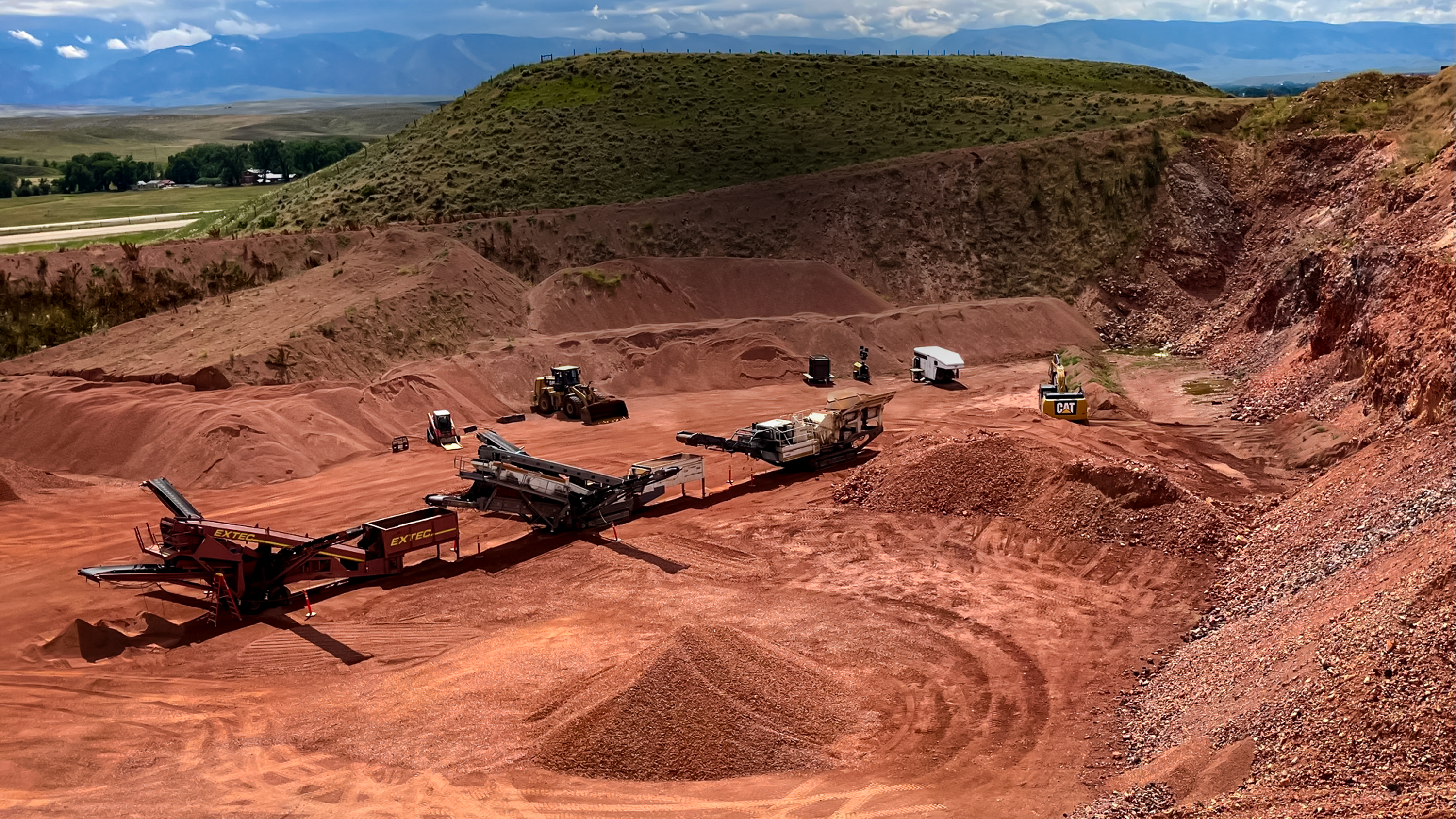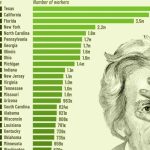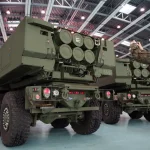The United States recognized decades ago that the Chinese Communist Party was subsidizing a vast expansion of Chinese mining and processing capacities to manipulate mineral and metal markets and dominate global manufacturing supply chains.
This vulnerability is longstanding. It was made glaringly apparent during 2010’s “rare earths crisis” when China restricted global exports of rare earths; in 2023, when it restricted gallium, germanium, and graphite to the United States; and in April, when it expanded restrictions to include gadolinium, dysprosium, lutetium, samarium, scandium, terbium, and yttrium.
When the CCP added seven rare earths to its export restrictions in April, this long-unresolved urgency became an existential threat, according to Derek Lemke, senior vice president at Exiger.
“The reality is, this is no longer a hypothetical risk. It’s a real, quantifiable supply chain chokepoint right now,” he told The Epoch Times. “We’re seeing the weaponization of the periodic table.”
In his second administration, President Donald Trump is countering this decades-long slide the old-fashioned American way: making mining and refining profitable again.
“In the last few years, it’s been this gradual build but in the last seven, eight months, President Trump has taken on critical minerals and made it a priority,” said Steve Christensen, executive director of the Responsible Battery Coalition.
The Washington-based coalition, whose members include Honda, FedEx, battery makers such as Clarios and Entek, and auto parts retailers, has been raising the alarm about reliance on China for minerals since it was founded in 2017.
“The president understands this issue, I think, probably better than any president in recent history,” Christensen told The Epoch Times.
However, it will take years, maybe decades, to revive the nation’s mining industry and reshore metal processing capacities for U.S. industries to access resources resilient to CCP market-meddling.
In the interim, it will require coordination with allied nations, according to Rahman Butts, who owns Bullion Hub, a gold and precious metals brokerage based in Melbourne, Australia.
“The direction is clear. Washington is striking deals with Canada, Australia, and parts of South America to spread supply risk,” he told The Epoch Times. “The problem is speed. New refineries take years to plan, finance, and build, so China’s lead in processing metals is not going to vanish in the short term.”

Critical Clarities
The groundwork for expediency has been laid, said Avadh Nagaralawala, an Arizona-based mining automation consultant.
“The EV transition, modernization of the grid, and national security priorities are all creating urgency that didn’t exist in quite the same way before,” he told The Epoch Times.
Nagaralawala cited the 2021 Bipartisan Infrastructure Law, the 2022 CHIPS & Science Act and Inflation Reduction Act, and the Obama-era establishment of a Department of Defense fund to subsidize reopening Mountain Pass Mine in California by MP Materials—until this summer, the nation’s only rare earths mine—as pivotal precursors.
“That said, the hurdles remain steep,” he said. “The U.S. isn’t short of resources; it’s short of refining, recycling, and permitting speed. That’s where the race will be won or lost.”
It wasn’t until Trump’s first term that a clear federal priority to define, source, and develop a critical mineral supply chain impervious to CCP market manipulation emerged.
The Trump administration directed the USGS to define “critical minerals,” how domestic industries need them, and where they can be mined and processed.
The bill requires USGS to update its critical minerals list every three years beginning in 2022, and orders the Department of the Interior (DOI) to track “reliance on critical minerals … from foreign adversaries” after publishing initial findings mandated by the 2020 executive order.

While President Joe Biden rescinded 72 of Trump’s 220 executive orders during his White House term, he retained the critical mineral actions.
In 2024, DOI published its first import-reliance report mandated under Trump’s 2020 order. Among the findings is that the United States imported 80 percent of rare earths, 100 percent of gallium and graphite, and up to 76 percent of lithium, nickel, and cobalt.
Exiger’s Lemke noted the new list is the first “significant change to these lists in a number of years, adding copper, potash, silver, silicon, radium, and lead,” and marks a clear “whole-of-government list” with USGS taking the lead from parallel Pentagon and DOI lists.

Nagaralawala said “classification … is a good start.”
“But the capacity of smelting, refining, and recycling will determine whether this policy shift delivers real energy and security resilience,” he said.
For that to happen, Lemke said, it will require a “whole-of-industry” approach in investing, and government commitment in, if not subsidizing, at least supporting markets that can weather CCP manipulation.
Christensen said, “We’re exploring how that might work.”
“Something has to be done,” he said, specifically citing the need for antimony, a key battery mineral not mined in the United States since 1982. Processors in China control half the global market for it.
Momentum and Markets
Exiger, founded in 2013, is the “largest provider of supply chain technology” to the U.S. government and a key participant in the Defense Advanced Research Projects Agency’s Open Price Exploration for National Security (OPEN) project.
“We’re utilizing AI to look at structural price models for these minerals, costs to produce within China, costs to produce within the United States, and starting to provide some data to the level of manipulation that you see,” Lemke said.
He said the driving question is: “Where can U.S. industry or U.S.-allied industry be successful” in developing markets less vulnerable to CCP manipulation?
More than 30 mining companies, manufacturers. and investors have joined.
“You’re starting to see where it’s not government control, but this kind of government-backed industry,” Lemke said, noting that while the Pentagon subsidizes MP Materials’ operations at Mountain Pass, there’s burgeoning industry investment elsewhere, such as Apple “with their own $500 million investment” in mineral sourcing.

Among Exiger’s roles is identifying where supply chain vulnerabilities are now and where they could be depending on varied scenarios.
“Do we have enough diversified, multiple sources coming online that can refine these products to the grade and requirements needed for some high-tech applications?” Lemke said. “In other words, we need not just to be able to refine, for example, copper. but to refine it to certain grades so it can be used in different applications.”
It’s a whole-of-government-and-industry effort to provide “visibility down from a part to the hole-in-the-ground,” he said. That lack of visibility “has really been one of the bottlenecks in enabling investment.”
Under Trump, a flood of money is galvanizing existing programs such as the Defense Industrial Base Consortium, the U.S. Permitting Council, and the Department of Energy’s Critical Minerals and Materials Accelerator.
In August, the department proposed shifting $1 billion from the Bipartisan Infrastructure Law and the Inflation Reduction Act programs into critical mineral projects.

Many question if these initiatives can overcome China’s market domination without direct subsidization. Christensen wonders, too.
“Those are things I think need to be explored because we’re playing against an opponent that is not confined to market forces. [China] will manipulate the price of their own product just to get it out there, just to keep others out of the marketplace,” he said.
“If you play by market rules—the rules we all learned in economics 101, in our first-ever business class in high school—if we play by those rules, China isn’t … and we’ll lose every time.”
Lemke is more optimistic.
“The quickest way to spin-up this industry is to get the large players together and have them, one, quantify their need, two, make the direct investments needed [through] this process of osmosis, things filtering down. hoping the demand signals come down,” he said.
It’s an existential challenge few Americans understand.
“It’s a battle not just in the highways, in the streets,” Lemke said. “It’s in the alley.”












